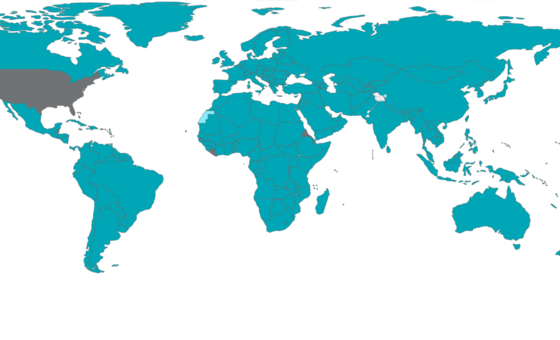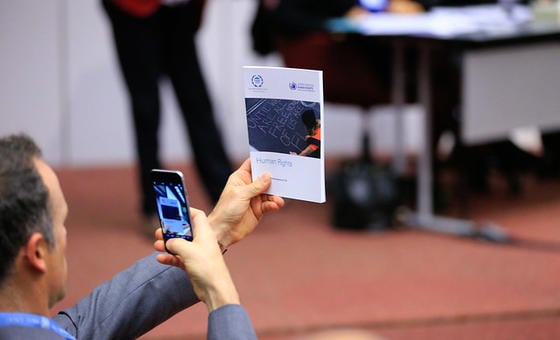- ImpactWe help parliaments to become greener and to implement the Paris agreement.We support democracy by strengthening parliamentsWe work to increase women’s representation in parliament and empower women MPs.We defend the human rights of parliamentarians and help them uphold the rights of all.We help parliaments fight terrorism, cyber warfare and the proliferation of weapons of mass destruction.We encourage youth participation in parliaments and empower young MPs.We support parliaments in implementing the SDGs with a particular focus on health and climate change.
- ParliamentsNearly every country in the world has some form of parliament. Parliamentary systems fall into two categories: bicameral and unicameral. Out of 190 national parliaments in the world, 78 are bicameral (156 chambers) and 112 are unicameral, making a total of 268 chambers of parliament with some 44,000 members of parliament. IPU membership is made up of 180 national parliaments
Find a national parliament
We help strengthen parliaments to make them more representative and effective. - EventsForumNY, United StatesThe Parliamentary Forum at the HLPF is designed to engage parliamentarians in assessing progress toward the Sustainable Development Goals (SDGs) at the global level.
- Knowledge
Discover the IPU's resources
Our library of essential resources for parliamentsGlobal data for and about national parliamentsLatest data and reports about women in parliamentResolutions, declarations and outcomes adopted by IPU MembersRecent innovations in the way parliaments workThe latest climate change legislation from the London School of Economics' databaseIPU on air- Conversations about parliamentary action

Interactive visualization of members’ positive/negative contribution to women’s rights
Parliaments aim to demonstrate openness by publishing parliamentary documents as open data. But this is only one side of the story: to be of value, open data has to work for the user. Publishers of open data, parliaments included, need to understand the user journey and see how their data is being or could be used by others. In this article, we look at how well-designed open data, combined with a focus on usability, can help make parliaments more accessible.
The user journey: using parliamentary data in the fight against domestic violence
During the 2021 World e-Parliament Conference, the CIP team spoke with AzMina, a Brazilian NGO that uses technology and journalism to combat domestic violence against women. As part of its legislative monitoring work, the organization has created the Elas No Congresso platform, which tracks, analyses and reports on actions by individual parliamentarians and political parties on domestic violence using open data sets from the Congress of Brazil. The website includes a ranking of MPs’ performance on this issue, as well as data visualizations showing whether they have contributed positively or negatively to legislation on domestic violence.
How can parliaments provide better open data?
Barbara Liborio (Managing Journalist, AzMina) explained that legislative monitoring to support civil society advocacy costs time and money, but that the open data services provided by both chambers of parliament mean that the process can be automated. As an end user, she offered the following recommendations to parliaments aiming to provide “usable open data”:
- Maintain informal communications between parliament and user groups (e.g. via WhatsApp).
- Provide data dictionaries that explain the available data sets.
- Provide regularly updated data sets.
- Make “getting started” tutorials available.
Parliamentary open data experts also shared data usability recommendations during the recent Transforming Parliaments webinar on the state of open data:
- Choose the right delivery strategy: Rodolfo Vaz (Coordinator of Digital Services for Citizens, Chamber of Deputies of Brazil) advised parliaments to understand their audiences and tailor delivery around their needs. Academic users tend to be more interested in historical data sets, whereas commercial users (such as lobbying groups) generally favour the latest data. Journalists, who are increasingly interested in using data but can be less familiar with technical APIs and open data platforms, often prefer personal engagement with parliament via email and telephone.
- Find outreach mechanisms that work: Ian Harrison (Head of the UK Parliament’s Open Data platform) said that the initial approach had been to “build it and they will come”, but that more needed to be done. Parliaments can expand their user groups beyond just data scientists by developing outreach mechanisms: blogs can increase awareness and understanding of the data, while push notifications and social media, including Twitter, can drive engagement. Using this approach, parliaments can build relationships with their communities in order to better understand and respond to user needs.
- Educate end users: Jurgens Pieterse (Management Information Systems Manager, Parliament of South Africa) argued in favour of training for users, especially those from marginalized groups. “Getting started” guides and tutorials, as well as glossaries and data dictionaries, can help to increase understanding – and, therefore, use – of parliamentary open data.




